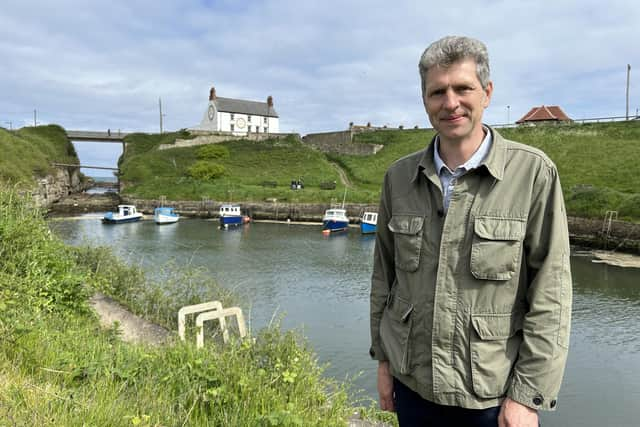BBC show Villages by the Sea to show archaeology of Seaton Sluice bottle making factory in new series
and live on Freeview channel 276
Archaeologist Ben Robinson visits the town in series four of BBC2 show Villages by the Sea, examining the area’s surprising history.
The presenter hopes to show that plenty of the village’s unique features often go overlooked.
Advertisement
Hide AdAdvertisement
Hide AdHe said: “You see the Tower House Gallery as it is now, the old harbourmaster's office, and you think ‘a great ornate structure, what is that doing here?’


“The answer is of course that that little harbour was actually, in its time, one of the great technical achievements of the age.
“It became Seaton Sluice because they developed this very innovative set of sluice gates to create a floating dock, so made it successful for coal, salt, and of course glass.
“I think it is one of those places where maybe people would drive through but not really explore it, and it really does need a good old explore.”
Advertisement
Hide AdAdvertisement
Hide AdThe episode also looks into the “phenomenal” and “almost completely forgotten” story of The Royal Hartley Bottleworks, a massive 18th century glass manufactory that has long since been demolished.
Ben said: “The bottleworks was called ‘the city’ because it was that full of people and business premises. It was a small town, really.
“Everyone is familiar with the big industrial cities but I do not think people realise that they started somewhere, and they started at places like Seaton Sluice. That was how industrial Britain was.”
The bottleworks and the harbour made the village central to east coast trade, meaning Seaton Sluice glass can be found all over the country and the world.
Advertisement
Hide AdAdvertisement
Hide AdBen added: “This was one of the premier glassmaking complexes in the country and it is just incredible, and there is barely a sign left of it today.”
The episode also uncovers the history of Seaton Delaval Hall, its nearby mausoleum, and the aristocratic Delaval family, equally “party people” and “industrial movers and shakers,” who made these grand projects happen.
Such is the depth of the area’s history that Ben does not have time to talk about the area’s military defences or its role in the coal and salt industries.
The show regularly visits Northumberland, having featured Lindisfarne, Bamburgh, Alnmouth, and Craster in previous series.
Advertisement
Hide AdAdvertisement
Hide AdBen said: “I love Northumberland. I love the coast there. The natural environment is fantastic, the rugged beauty of the place, and it is no accident that in the course of these four series we have visited Northumberland quite a lot.
“The thing that really draws me is the very rich history there is to this area going way back to ancient times, but also the more recent history as well, the industrial history.”
Geography meant Seaton Sluice’s infrastructure could not expand with industrial progress, leading to things quietening down and it becoming the place it is today, but this does not make it less interesting to Ben.
He said: “Every village has a unique story to tell. Some of them are of national importance and certainly somewhere like Seaton Sluice.
“This is really important to our national story. We have got to explore our villages more and care for them more.”